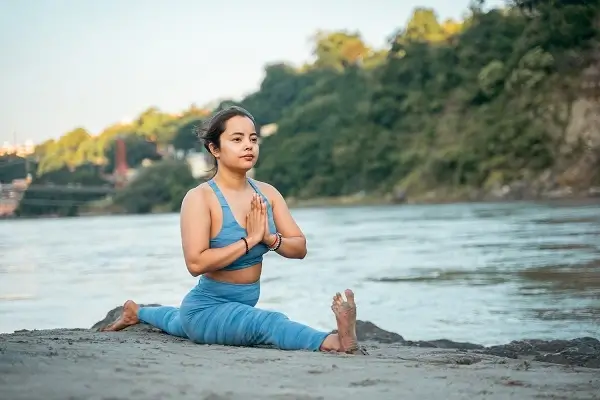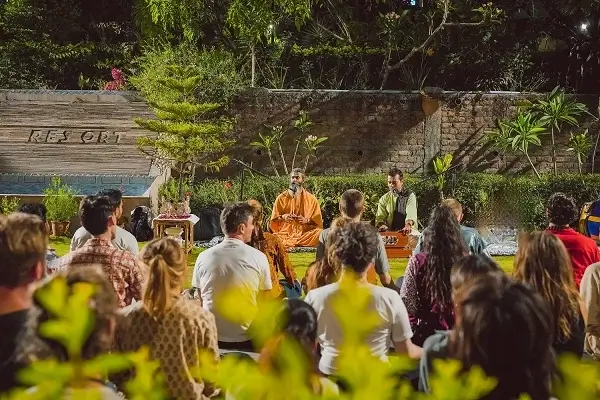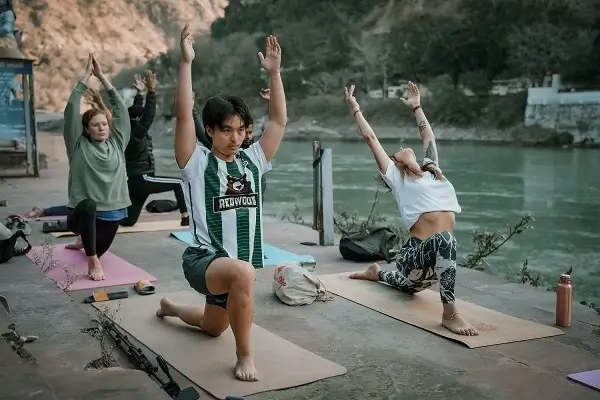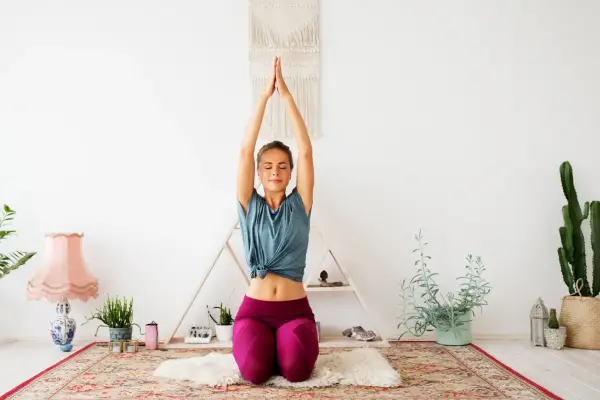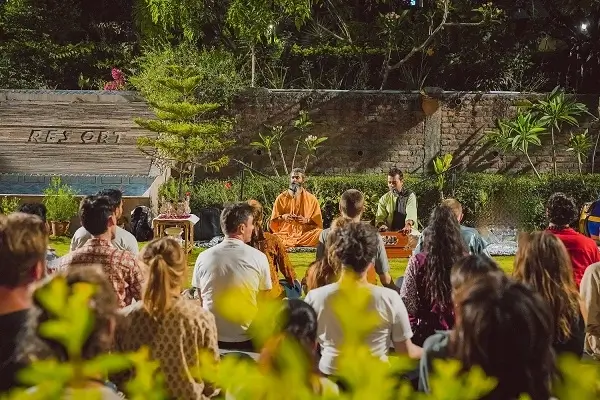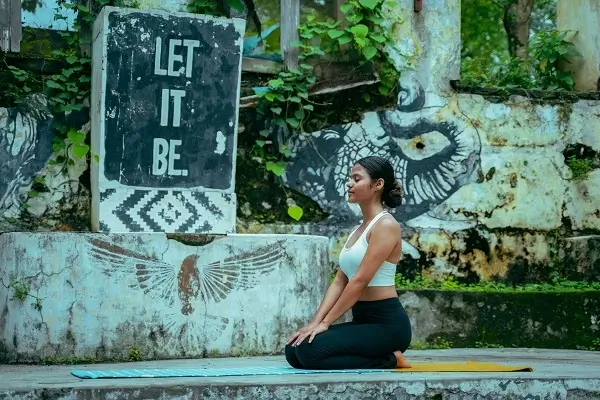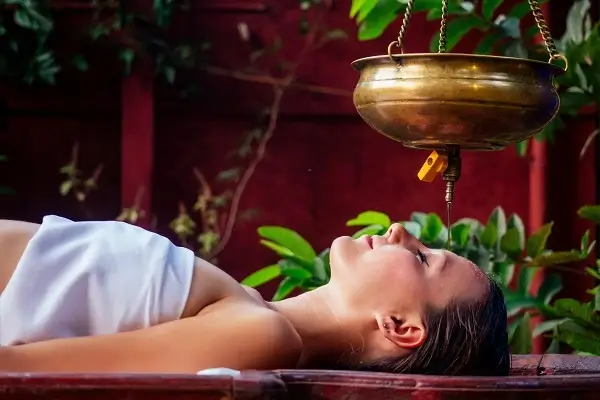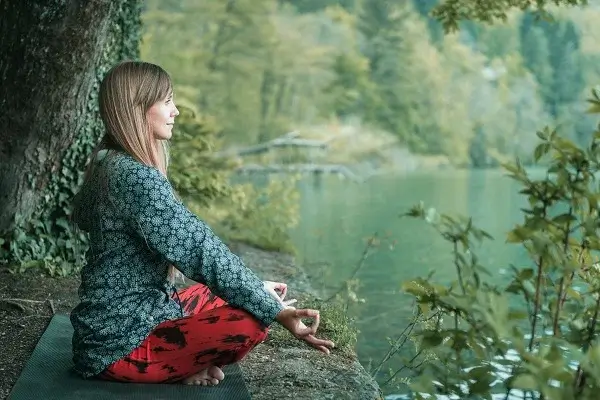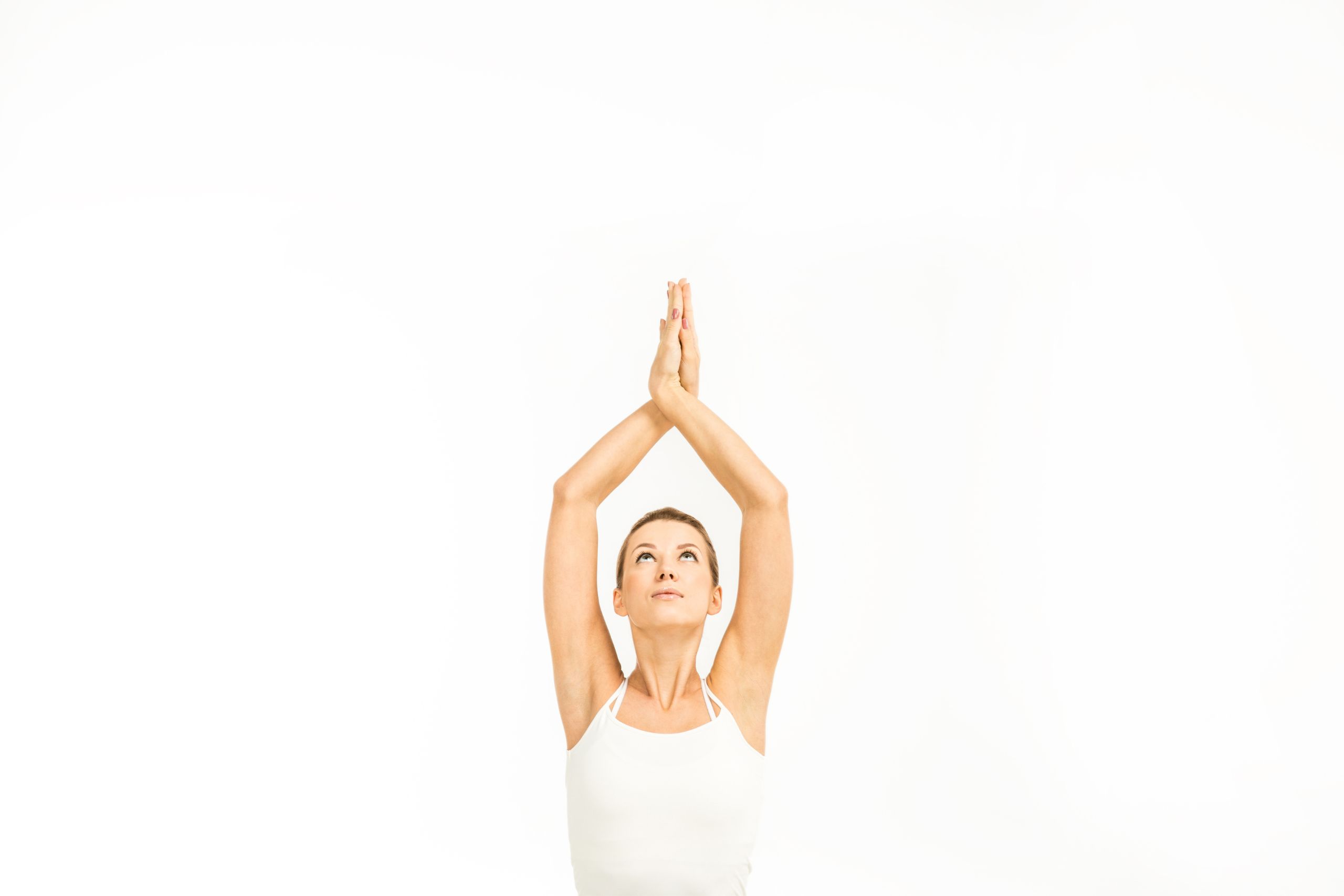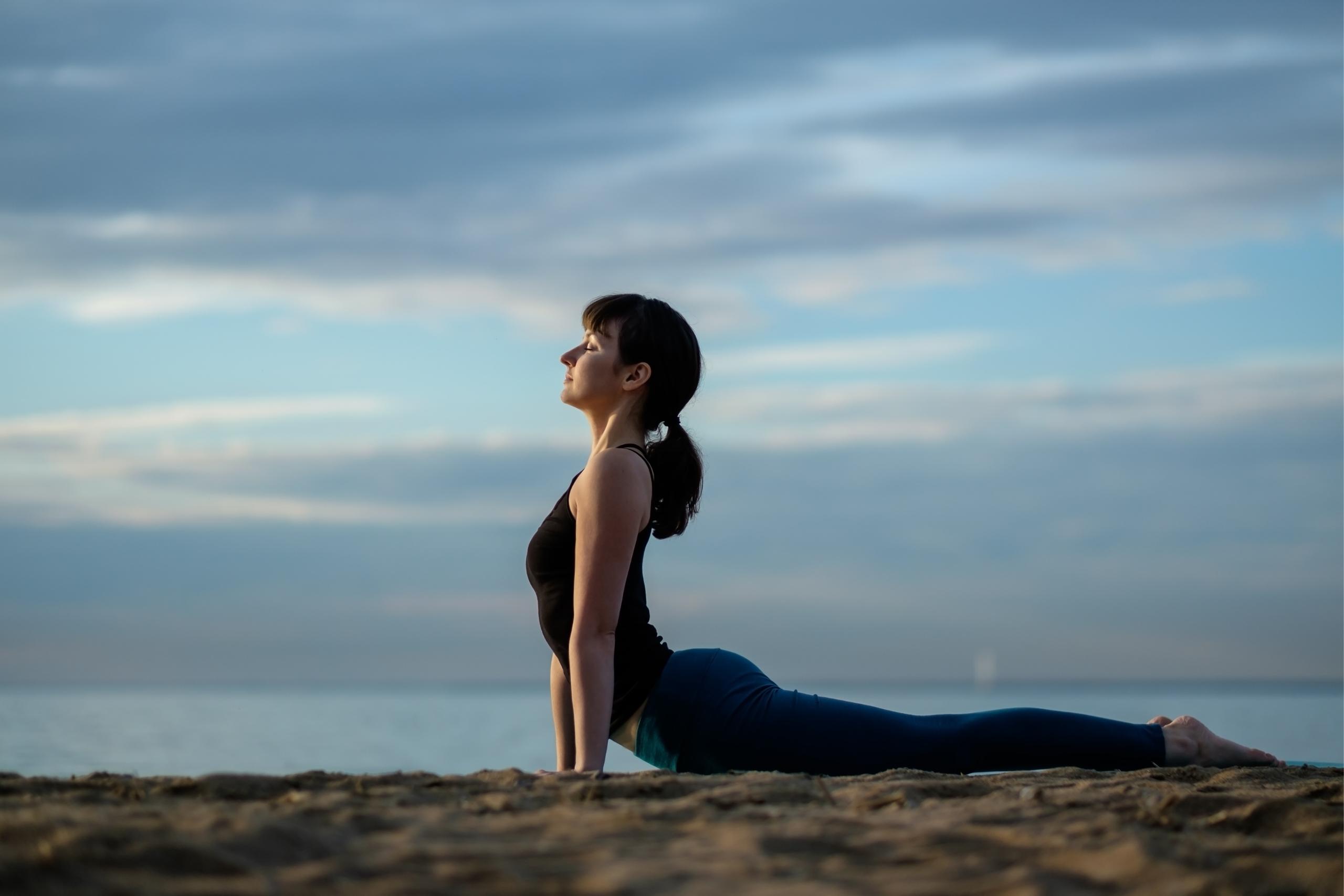Surya Namaskar: The Complete Guide to Sun Salutation
Table of Contents
- 1. Warm Up Before Practicing Surya Namaskar
- 2. Step-by-step Surya Namaskar
- 2.1. Pranamasana or the Prayer Pose
- 2.2. Hasta Uttanasana or the Raised Arms Pose
- 2.3. Padahastasana or the Hand to Foot Pose
- 2.4. Ashwa Sanchalanasana or Equestrian Pose
- 2.5. Parvatasana or the Mountain Pose
- 2.6. Ashtanga Namaskar or the Eight-Limbed Pose
- 2.7. Bhujangasana or the Cobra Pose
- 2.8. Ashwa Sanchalanasana or the High Lunge Pose
- 2.9. Padahastasana or the Standing Forward Bend Pose
- 2.10. Hasta Uttanasana or the Raised Arms Pose
- 2.11. Pranamasana or the Prayer Pose
- 3. Points To Keep In Mind While Performing Surya Namaskar
- 4. End Thought
Surya Namaskar is an ancient yoga practice that you have heard of if you're a fitness fanatic seeking a dynamic workout regimen to help you lose those extra pounds. Surya Namaskar, often known as the "Sun Salutation," is a wonderful way to begin the day and may help you lose weight.
This amazing yogic practice consists of a rhythmic series of poses and stretches still it is not just an uplifting physical workout but also a moving meditation that awakens your body's energy chakras and brings the mind into harmony with the present moment because of the sequence's continuity, which cultivates a sense of unity and connection.
Sun salutations is known for its health benefits and we have created a detailed blog backing our claim but how to perform the routine? How many must one perform for the best results? This article will be your guide to learning all about these yogic practices.
Warm Up Before Practicing Surya Namaskar
Surya Namaskar is itself considered the warm-up for the practice of yoga where most vinyasa yogis still adopt sun salutations as a predecessor to rather challenging sequences. However, if you are doing Surya Namaskar for the first time or struggle with any sort of mental tension, stretching before beginning the sequence will be helpful.
Start your practice with a child’s pose or Balasana for several breaths, followed by a cat and cow pose or Marjaryasana and Bitilasana, and then savasana or corpse posture. If your lower back tends to be stiff you can coax the backbend or cobra pose of Bhujangasana to stretch your spine and neck, while providing an overall stretch to your legs and hamstring. Try monitoring your breathing with pranayama and alternate nostril breathing.
Step-by-step Surya Namaskar
The 12 yoga positions known as Surya Namaskar are performed in homage to the sun. This sun salutation is traditionally performed in the morning to honor the rising sun and mark the start of a new day. After completing each stance, move back to your starting position by oppositely repeating the same pose. There are numerous paths in this sequence, Surya Namaskar A being only one.
Pranamasana or the Prayer Pose
The most popular way to greet someone in India is with the Anjali Mudra, also known as the Pranamasana. It is a show of respect. The first of the 12 Surya Namaskar poses is Pranamasana, which is similar to a Namaste. Standing upright on the front of your yoga mat, execute this pose. Keep your arms relaxed by your sides and bring your feet together. Now, take deep breaths to expand your chest. Let your shoulders drop. Now take a breath, lift your arms, and as you release the breath, unite your palms in a Namaste in the middle of your chest. This is truly a prayer position in India.
Hasta Uttanasana or the Raised Arms Pose
Inhale deeply and clasp your hands together. Then, slightly bend your back and raise your arms. You must slightly move your pelvis forward. As you extend your back, aim to make your spine longer. Stretch your entire body up directly from your heels, bringing your biceps up to your ears.
Padahastasana or the Hand to Foot Pose
Bend forward and use your fingers to try to touch your toes as you release the breath. If staying straight when bending is not possible, it's acceptable for beginners to bend their knees at first. But your back shouldn't curve. To equally distribute your weight, keep your neck and shoulders loose and lightly press into your heels.
Ashwa Sanchalanasana or Equestrian Pose
You will need to slightly bend your knees and place your palms on the mat so that they are parallel to both of your feet as you return from Hasta Padasana. Stretch your left leg backward and pull your right knee closer to the right side of your chest as you inhale. Raise your head to face forward while maintaining your balance.
Parvatasana or the Mountain Pose
Raise your hips toward the ceiling as you release the breath. Plant your heels firmly on the mat or floor. Next, tilt your head so that your navel is in line of sight. You should maintain a relaxed neck and shoulders while distributing your weight equally throughout your limbs. Look at your navel and extend farther with each breath in and out.
Ashtanga Namaskar or the Eight-Limbed Pose
This pose, which is also known as salutations using the eight-limbed Ashtanga yoga, is executed by exhaling and lowering your knees to the floor. After that, you should raise your hips slightly off the ground while resting your chin on the ground. Your rear should be held in the air as your hands, chin, knees, and chest land on the ground. Breathe and try to maintain this position as long as you can.
Bhujangasana or the Cobra Pose
With your palms flat on the mat, elevate your head to form a backbend while you inhale. Bend your elbows slightly so they touch your body. Next, you need to relax your neck and roll your shoulders back. In this Sur Namaskar stance, your lower body and legs should be reclining on the floor.
You will need to repeat Ashva Sanchalanasana, Uttanasana, Padahastasana, and Pranamasana after finishing the ninth stage of the sun salutation practice.
Ashwa Sanchalanasana or the High Lunge Pose
Recover from Adho Mukha Svanasana by keeping your right leg extended forward. Next, slowly look forward while keeping your feet on the ground and putting your left leg behind you. Gently press your rear end on the mat to enhance the depth of the stretch.
Padahastasana or the Standing Forward Bend Pose
Place your left foot forward and in close proximity to your right foot as you inhale. Keep your hands in place and incline your torso forward. Breathe out slowly while using your fingers to make contact with the floor. When performing this Surya Namaskar stance, it is advisable to review the advantages and warnings of step 3.
Hasta Uttanasana or the Raised Arms Pose
Stretch backward through your spine and raise both hands aloft. Lean back and look at the ceiling. When performing this Surya Namaskar stance, it is advisable to review the advantages and warnings of step 2.
Pranamasana or the Prayer Pose
Return to the spot where we started now. We have completed a cycle of 12 positions, as you may have seen. Breathe out and stand straight, just like in the first step, while letting your body relax. Next, extend your arms downward and place your hands in the middle of your chest to form the Namaste.
The Sun Namaskar Mantra should always accompany your sun salutation practices. This music creates harmony in body, soul, and mind. When the practice deepens, so will the benefits. Mantras that, when chanted with sincere appreciation, can take the practice to an enhanced spiritual level. “Om Bhanave Namah” means “He Who Brings Light”.
As you recite this mantra, feel immense gratitude to the sun for giving us light and making life possible on Earth. ‘Om Suryaaya Namah’ means ‘destroyer of darkness’. This means that we worship the sun in the light it gives us.
Also read: Benefits of Surya Namaskar
Points To Keep In Mind While Performing Surya Namaskar
Surya Namaskar or Surya Namaskar is a series of yoga poses that gives a full body workout. It incorporates elements of flexibility, strength, and balance with an emphasis on breath control and concentration.
Here are some key points to keep in mind while doing Surya Namaskar:
-
Harmonise your breath: Harmonise your movement with your breath. Inhale when you open the backstroke and exhale when you contract like a forward stroke. These sessions provide psychological insight and help maintain a strong rhythm throughout the series.
-
Establish a proper routine: Check your body alignment in each pose to avoid injury. Focus on keeping a neutral spine, with your shoulders relaxed and align your knees and ankles to maintain a posture safely and efficiently.
-
Align your body: Based on your flexibility and strength, adjust your posture as needed. If certain positions are too difficult, use a modifier or prop to make the process easier and relieve stress or injury.
-
Start slowly and progress slowly: If you are new to sun salutations, start with a few slow motions, focusing on form and breath. Gradually increase the speed and number of routes as you gain confidence and strength.
-
Create a quiet study area: Find a quiet, uncluttered place where you can relax without distractions. Use a non-slip yoga mat that will allow you to stand with stability. A peaceful and quiet state will enhance the meditative nature of the Surya namaskar, allowing you to focus on its breath and movement.
-
Get guidance if necessary: If you are performing Surya namaskar for the first time it is important to know the correct technique and sequence, thus consider taking the help of yogic teachers like the one at Heart of Yoga Institute in India as they will help you build a solid foundation of not just Surya namaskar but other yogic practices as well.
End Thought
This key pose of sun salutation synchronizes your body's motions with your breathing, and engaging in this rhythmic practice first thing in the morning has numerous psychological, physical, and energetic advantages. For this reason, it is crucial to your yoga practice to practice Surya Namaskar on its own or a few rounds before beginning your usual regimen. Like tending a garden, losing weight takes patience and perseverance.
Surya Namaskar can help you in your weight loss efforts. Sun salutations can help you maintain a healthy weight, and you will be much happier if you use them daily and with dedication. Then spread out on your yoga mat, lay under the sun, and start on the road to transformation!


